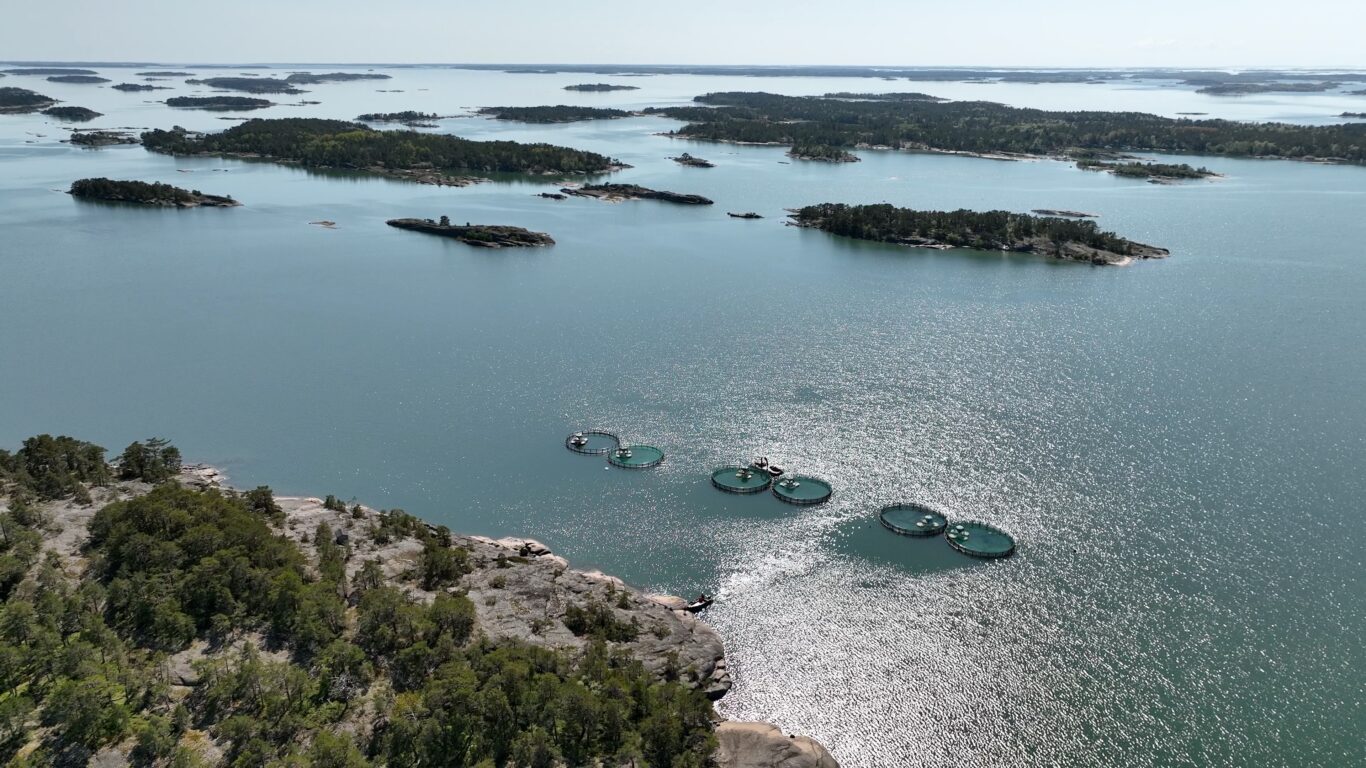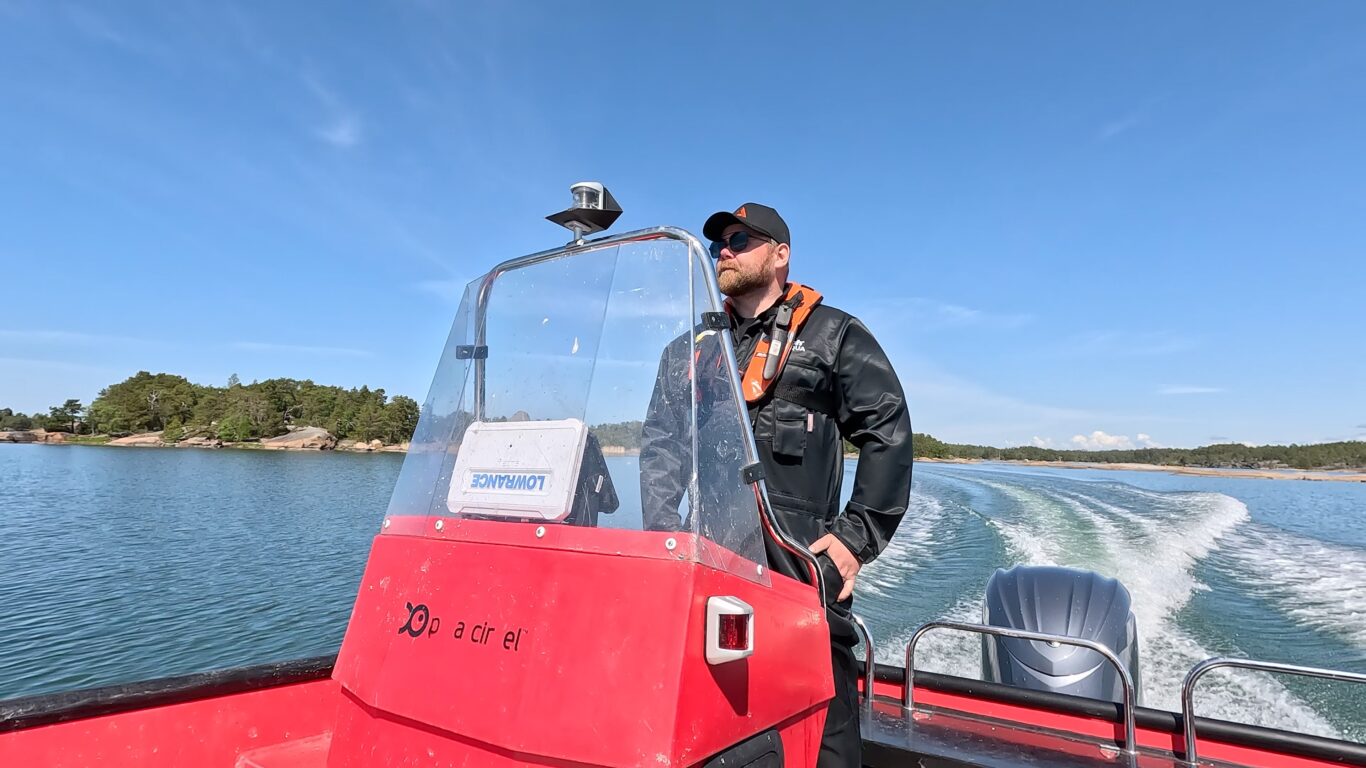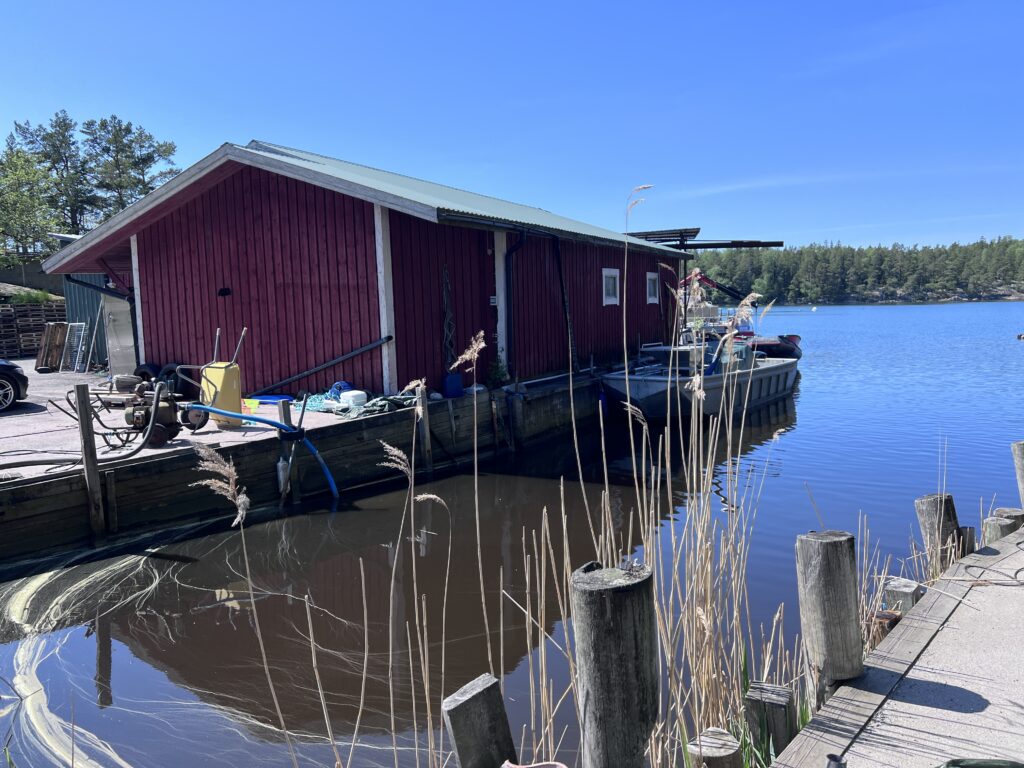Lännenpuolen lohi – Rainbow trout smolt farming in Kustavi and Viitasaari

Lännenpuolen Lohi fish farm is in Kustavi in the Turku archipelago. The fish farm has been run by Sami Suominen since 2019, who grew up in the family business.
“My parents started farming fish in the early 1980s. I was involved in everything from an early age – you could say that my daycare was in a fish tub. As a teenager, I was determined to do something completely different from fish farming and somewhere else besides Kustavi, but I ended up coming back here,” Suominen laughs.

Fish farming from eggs to smolts
Lännenpuolen Lohi began as a farm producing food fish and remained so until the early 2000s. Gradually, the business shifted towards smolt farming, which is now its sole focus.
“In May and June, we receive small fingerlings weighing about 15 grams, which we raise for a year. By the following spring, the smolts weigh 300–400 grams and are transferred to our customers and partners for further farming.”
In addition to the farming facility in Kustavi, Suominen runs RAS Fish Oy, a recirculating aquaculture system plant in Viitasaari. It’s a hatchery that farms eggs to fries and fingerlings. The company can supply fingerlings to its customers all year round.
“We can respond to the challenges of modern hot summers, among other things. Inland, natural waters tend to warm up so much that it is impossible to feed the fish, but this is not a problem at the recirculation plant.”
Healthy juvenile fish need the best possible feed
The journey of fish from the farmer to the consumer’s plate is a long chain, in which every link is essential. The chain begins with the care and feeding of broodstock to ensure high-quality eggs. Rainbow trout hatchlings are about the size of mosquitoes.
“Handling juvenile fish is exact work and requires a delicate touch. The smaller the fish, the more sensitive it is. We need to handle fish at several stages during their life cycle, sort them by size and transport from one place to another,” Suominen explains.

Healthy juvenile fish are essential for producing high-quality fish for consumption. Growing fish need the best possible feed, containing sufficient vitamins, protein, micronutrients and other nutrients. Lännenpuolen Lohi has been working with Fennoaqua, formerly Raisioaqua, for a long time, and they have even developed feed together.
“It has always been easy to discuss feed and quality issues with them. The interaction has been two-way: if I have an idea that I’d like to try, they listen to me. Among other things, we have tried to find out whether fish prefer a certain recipe or whether they grow better on a certain diet.”
Fish have always brought livelihood to Kustavi
Kustavi has traditionally been home to a variety of industries: fishing, agriculture, and coastal shipping, with locals transporting cargoes around the archipelago in their boats.
“They sold pike and firewood as far away as Stockholm,” Suominen mentions.
Fish farming began in the 1970s.
“The peak years were in the late 1980s and early 1990s, when there were rainbow trout cages in almost every bay and inlet. Today, production volumes are almost the same, but there are far fewer people involved.”
Suominen recalls that fish farming used to be purely manual work.
“They set the nets in the water and pulled them up into the boat by hand. They caught the fish with hand nets and transferred them to and from the tanks by hand. They fed the fish by throwing pellets of feed into the water. The most common tool for this was an orange plastic scoop, and for more efficient feeding, they used aluminium snow shovels. It was hard on the shoulders,” Suominen laughs.

A developing field and a versatile profession
Nowadays, people from diverse backgrounds become fish farmers and learn by doing. The work still requires good physical condition, even though machines and technology have made things much easier.
“Fish farming has changed even since I started. I still consider myself quite young, but I have already seen the industry become more technical. For example, feeding is now mainly done by automatic feeders.”
Despite the automatic feeders, at Lännenpuolen Lohi, they also carry out daily rounds of manual feeding. During the round, they check how the fish are doing, growing, and how much they are eating, and ensure that the feed is utilised as effectively as possible.
These days, a wealth of information is available on feeding and feeding technology, including very accurate feeding tables and other tools.
“We no longer rely on guesswork, but on knowledge. However, nothing can replace the human eye and experience: you must see how the fish behave and understand how to work with living animals. The well-being of the fish is reflected in every aspect of the production chain – this is something that people absolutely must understand.”
Fish farming is worth investing in in Finland
Suominen sees a bright future for rainbow trout farming: demand is not going to fall.
“People need protein in their diet, and farmed rainbow trout is a good, healthy option. What’s more, its carbon footprint is so small that not even all plant-based proteins come close to it. It is important to invest in domestic production and secure the conditions for it, especially in the current unstable global situation.”